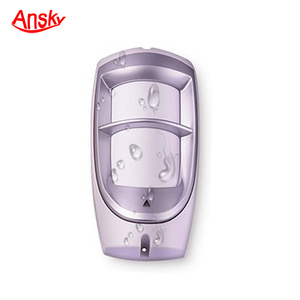(1012 products available)
















































































































































































































In the realm of electronic components, best sensor object detection play a pivotal role in various applications, especially within the telecommunications sector. These sophisticated devices are designed to detect and measure light, converting optical signals into electronic data that can be further processed. best sensor object detection are integral to systems that require precision and reliability, including automation, security, and environmental monitoring. As the demand for advanced technological solutions grows, the importance of best sensor object detection in providing accurate and efficient data acquisition cannot be overstated.
The diversity of best sensor object detection in the market caters to a wide range of applications. Common types include photodiodes, phototransistors, and charge-coupled devices (CCDs). Photodiodes are known for their ability to convert light into current, making them ideal for applications that require fast response times. Phototransistors, on the other hand, offer amplification capabilities, providing greater sensitivity in detecting light signals. CCDs are particularly valuable in imaging applications, as they can capture detailed images by converting light into electronic signals. Each type of best sensor object detection is designed to meet specific requirements, ensuring optimal performance for its intended use.
best sensor object detection offer a range of functionalities that make them indispensable in various industries. These sensors are primarily used to detect light intensity, color, and wavelength, providing critical data for applications like barcode scanning, ambient light sensing, and optical communication. Key features include high sensitivity, fast response times, and low power consumption, which enhance their usability in compact and portable devices. The ability of best sensor object detection to operate in a wide spectrum of light conditions makes them versatile for both indoor and outdoor applications. Additionally, advancements in technology have led to the development of sensors with programmable sensitivity levels and spectral filters, allowing for greater customization in different environments.
The construction of best sensor object detection involves a variety of materials, each contributing to the sensor's performance and durability. Silicon is the most commonly used material due to its excellent light absorption properties and cost-effectiveness. Other materials like indium gallium arsenide (InGaAs) and germanium are used to enhance sensitivity in specific wavelength ranges, particularly in infrared applications. The choice of materials impacts the sensor's efficiency, operating temperature range, and light detection capabilities. As technology advances, the exploration of new materials such as graphene and quantum dots is underway to improve the performance and extend the application range of best sensor object detection.
To maximize the benefits of best sensor object detection, understanding their optimal usage scenarios is crucial. These sensors are widely used in automation systems for object detection and positioning, ensuring precise control and efficiency. In security systems, best sensor object detection are employed for monitoring light levels and detecting unauthorized access. Environmental monitoring applications utilize these sensors to measure light intensity and analyze atmospheric conditions. Selecting the appropriate best sensor object detection based on the specific application and environmental conditions can significantly enhance performance. Regular calibration and maintenance are also essential to ensure the accuracy and reliability of the sensors over time.
When selecting best sensor object detection for specific applications, several factors should be taken into account to ensure optimal performance. One of these is the sensor's sensitivity and wavelength range, which must align with the application's requirements. For instance, some sensors are better suited for detecting visible light, while others excel in infrared applications. Additionally, considering the environmental conditions in which the sensor will operate is crucial. Factors such as temperature, humidity, and exposure to light can impact the efficiency and longevity of best sensor object detection. Understanding these parameters helps in choosing the most suitable sensor for your needs.
The size and form factor of best sensor object detection is another important consideration. Depending on the application, sensors may need to be compact for integration into small devices or robust for industrial use. The sensor's connection interface, such as analog or digital output, should also match the system's requirements. Furthermore, the power consumption of best sensor object detection must be evaluated, especially for battery-operated devices where energy efficiency is paramount. By carefully analyzing these factors, one can select sensors that provide reliable and accurate data acquisition.
The accuracy of best sensor object detection can be influenced by several factors, including the sensor's design, the quality of its components, and the calibration process. External environmental conditions such as temperature fluctuations and electromagnetic interference can also affect sensor performance. Regular calibration and maintenance are essential to maintain the accuracy and reliability of best sensor object detection over time.
Integrating best sensor object detection into existing systems involves assessing compatibility with current hardware and software. This requires checking the sensor's output type, such as analog or digital, and ensuring it matches the system's input capabilities. Proper integration may also necessitate adjustments in the system's software to accommodate the sensor's data format and processing requirements. Collaborating with technical experts can facilitate seamless integration.
best sensor object detection offer several advantages, such as high precision in detecting light intensity and color, fast response times, and low power consumption. Unlike other sensor types that may require physical contact, optical sensors can operate remotely, making them suitable for non-invasive applications. Their versatility in different light conditions enhances their usability across various industries.
Yes, best sensor object detection are widely used in environmental monitoring applications. They can measure light intensity, analyze atmospheric conditions, and detect changes in weather patterns. These sensors provide valuable data for assessing environmental health and can be integrated into systems that track pollution levels or monitor plant growth. Their sensitivity and adaptability make them ideal for such applications.
Maintaining best sensor object detection involves regular calibration to ensure accurate readings, cleaning to prevent dust and debris from affecting sensor performance, and inspections for wear and tear. Depending on the sensor's usage and environment, maintenance schedules may vary. Implementing a routine check-up can prolong the sensor's lifespan and maintain its efficiency in data acquisition.